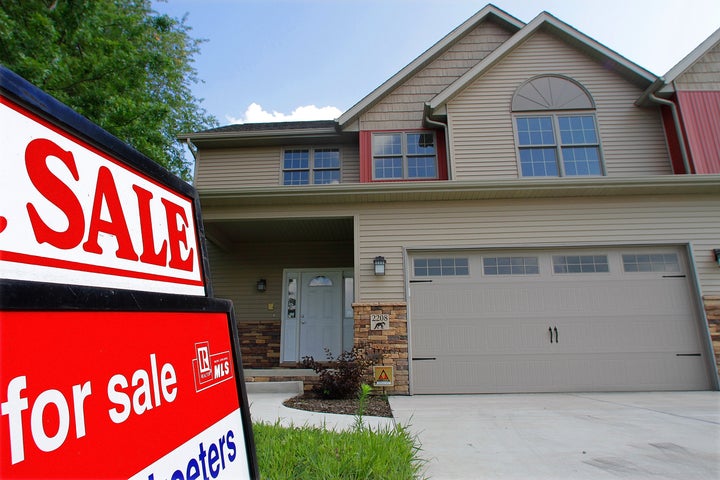
Home ownership, long a central pillar of the American dream, seems increasingly unattainable for growing numbers of households.
Yet old views died hard, and nine out of 10 Americans still consider home ownership “an important part of the American dream," according to a June poll by The New York Times/CBS News.
Indeed, there are signs of slight improvement in the housing market. In June, work started on 629,000 new houses, a five-month high that beat economists’ expectations saw an uptick in construction in every region in the country. But that doesn’t necessarily indicate the housing market is in recovery -- because, as real estate analyst Mike Larson recently told The Washington Post, “[p]eople who don’t have jobs don’t buy houses.”
And many, many people don’t have jobs. Unemployment rose to 9.2 percent in June, a figure that would actually be higher than 11 percent if there were still as many people actively looking for work as there were at the start of the recession, according to the Wall Street Journal. Among those who have jobs, wages are falling and many people can only find part-time work rather than full-time.
The grim employment situation is reflected in home ownership statistics. On Wednesday, Morgan Stanley released a report showing that if delinquent borrowers are excluded, the U.S. home ownership rate is only 59.7 percent, which would be an all-time low. Leaving in the country’s roughly 7.5 million delinquent borrowers, home ownership is at 66.4 percent.
Morgan Stanley housing strategist Oliver Chang told Bloomberg that given runaway foreclosures and tight credit for borrowers, America is moving “away from being an ownership society” -- President George W. Bush’s vision of a country with high home ownership -- and “towards becoming a rentership society.”
Those unexpectedly high June housing starts might actually bear out Chang’s prediction. As recently pointed out by the WSJ, construction of single-family homes grew by 9.4 percent in June -- but construction of multi-family homes with at least two units increased three times as much, by 30.4 percent. In other words, there were a lot more apartments than houses.
A report from the investment management company PIMCO recently offered a number of reasons why housing demand is likely to stay depressed.
A 20 percent down payment on a mortgage is becoming standard, the PIMCO report notes. For someone making $48,000 a year, it would take 16 years to save enough for that size of downpayment on a median-priced home.
Meanwhile, college graduates are entering the workforce with high debt and low wages -- the average salary for recent grads was $27,000 in 2010, down from $30,000 in 2007, PIMCO notes. These factors in combination “could serve to limit college graduate home purchasing power for the foreseeable future.” And current homeowners are more likely to save for retirement than try to make ambitious changes to their living situation. For retiring Americans, the PIMCO report predicts “one home instead of two, rent rather than own, smaller place rather than large.”
A Reuters survey of economists found widespread skepticism at the idea that June’s housing starts indicated a substantive market recovery. Indeed, the National Association of Realtors reported Wednesday that existing home sales were down 0.8 percent in June, to a relatively anemic rate of 4.77 million. That’s 9 percent less than the rates a year ago, The Washington Post points out.
